Editor's Picks
Open Access
Review
How algorithms are transforming the diagnosis of ischemic heart disease—state of the art
Ischemic heart disease (IHD) is a leading cause of morbidity and mortality worldwide, highlighting the necessity for better diagnostic modalities. Artificial intelligence (AI) and machine learning (ML) are increasingly being used with multimodal cardiovascular diagnostic testing to provide standardized and reproducible assessment methodologies that have been shown to detect subtle signals beyond human recognition. This state-of-the-art review will summarize the various applications of AI across key modalities: describing its use in electrocardiography to risk-stratify patients; in coronary computed tomography angiography (CCTA) for quantitative plaque and stenosis measurements as well as measuring fractional flow reserve (FFR) derived from imaging; in cardiac magnetic resonance imaging (MRI) to automatically segment cardiac chambers and characterize tissue; and in intracoronary imaging [specifically intravascular ultrasound (IVUS) and optical coherence tomography (OCT)], where automation is evolving. We will also discuss combining these sources of data through clinical decision support systems (CDSS) that can enhance the comprehensive evaluation of IHD. We anticipate several issues for implementation, including validation, regulation, transparency, and clinical integration. Overall, AI can help reduce the number of time-consuming manual measurements used to augment quantitative features of an assessment and improve physiology-based decision-making. However, there were marked differences in performance based on the task and dataset, and AI was not always better than the human experts. Ultimately, AI must be validated prospectively, must be generalizable, and reported transparently for safe adoption in IHD care globally.
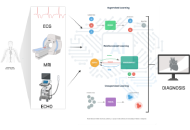
Open Access
Mini Review
Emerging insights into tricuspid valve disorders: epidemiology, clinical entities, innovations, and future perspectives
Tricuspid valve disorders (TVDs) have historically been underrecognized by clinicians. However, recent years have seen increasing awareness of their clinical impact. This mini-review aims to briefly highlight some questions regarding TVDs, such as Review of tricuspid valve disorders, Decoding its trends, The gender and racial divide, Breaking barriers, Where you live matters, Surgery vs. minimally invasive options, Bridging the gap, and the underappreciated significance of TVDs and why they’re becoming a growing concern in the U.S. There is a significant change in perception of the tricuspid valve—from being the “forgotten valve” to being an important area of focus in cardiology as well as clinical medicine in general. With the aid of advanced imaging methods like echocardiography, CT, and MRI that show a clear and three-dimensional view of the tricuspid valve, there is a better understanding of both the prevalence and diagnostic precision of TVDs. Advancements involving more efficient and optimally timed treatment strategies are also occurring. Although medical and surgical approaches are still in use, developments such as transcatheter tricuspid valve interventions (TTVIs) are promising, particularly for high-risk patients with minimal improvement with surgical treatment. TVDs, especially tricuspid regurgitation, have gained widespread attention in the medical and research community, resulting in improved and evolving diagnostic and therapeutic progress to improve patient outcomes.
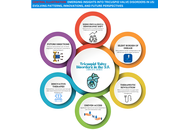
Open Access
Review
Comparison of short-term and long-term effects of peroral L-carnitine intake: clinical implications of elevated TMAO levels in cardiovascular complications
L-Carnitine (LC) is integral to energy production and fatty acid metabolism, facilitating the transport of long-chain fatty acids into mitochondria for β-oxidation. It modulates metabolic pathways, including pyruvate dehydrogenase activity, proteolysis, and protein synthesis, while also having anti-inflammatory and antioxidant characteristics. LC can be commonly applied to win the battle against HIV and cancer cachexia. Also, it can be recruited with the aim of improving physical and cognitive functions in athletes and the elderly. Despite these benefits, long-term LC administration has been associated to cardiovascular risks due its conversion to trimethylamine-N-oxide (TMAO) by the gut microbiota. Elevated TMAO levels are linked to atherosclerosis, oxidative stress, and an increased risk of cardiovascular disease, diabetes, and chronic kidney disease. Managing TMAO levels using dietary treatments and gut microbiota-targeting techniques, such as probiotics, may reduce these risks. This comprehensive review presents the state-of-the-art information on LC’s dual role, emphasizing the balance between its therapeutic potential and the risks of prolonged supplementation. It aims to guide clinicians and researchers in optimizing LC’s benefits while addressing its long term cardiovascular safety concerns.
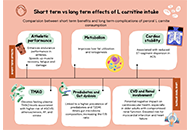
Articles
Latest
Most Viewed
Most Downloaded
Most Cited
Open Access
Review
Vascular and neural mechanisms linking sexual dysfunction and peripheral artery disease in patients with diabetes
Abdülmelik BİRGÜN ... Yusuf KARAVELİOĞLU
Published: December 01, 2025 Explor Cardiol. 2025;3:101283
This article belongs to the special issue The Effect of Sexual Dysfunctions, Peripheral Artery Disease, and Patient Education on the Cardiovascular Risk in Diabetes
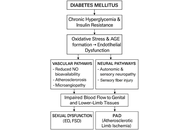
Open Access
Review
Multimodality cardiac imaging and management of infective endocarditis: a review
Tess Calcagno ... Tom Kai Ming Wang
Published: November 19, 2025 Explor Cardiol. 2025;3:101282
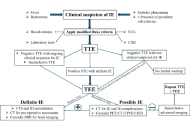
Open Access
Original Article
Burden of premature atrial contraction as a predictor of recurrence after atrial fibrillation ablation
Ruben Hoffmann ... Pieter Koopman
Published: November 13, 2025 Explor Cardiol. 2025;3:101281

Open Access
Perspective
Lung water and coronary flow as complementary signals in aortic valve replacement
Marco Fabio Costantino ... Gianpaolo D’Addeo
Published: November 11, 2025 Explor Cardiol. 2025;3:101280

Open Access
Review
Endothelial dysfunction and vascular stiffness: molecular drivers of cardiovascular aging
Muhammet Cihat Çelik ... Yusuf Karavelioğlu
Published: November 06, 2025 Explor Cardiol. 2025;3:101279
This article belongs to the special issue Molecular Mechanisms of Cardiovascular Aging
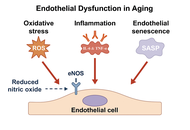
Open Access
Systematic Review
Emerging cardiac CT biomarkers: a systematic review of diagnostic and prognostic utility in cardiovascular disease
Mubariz Ahmed Hassan ... Kimberly Delcour
Published: October 23, 2025 Explor Cardiol. 2025;3:101278
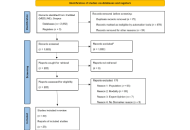
Open Access
Review
Why and when should be lipoprotein(a) level measured?
Miłosz Broncel, Marlena Broncel
Published: December 29, 2023 Explor Cardiol. 2023;1:180–192
This article belongs to the special issue Common cardiovascular target for a wide gamut of contemporary health problems – thrombotic and arrhythmic sides of an inflammatory coin
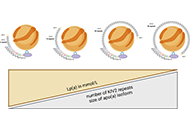
Open Access
Review
Comparison of short-term and long-term effects of peroral L-carnitine intake: clinical implications of elevated TMAO levels in cardiovascular complications
Harsahaj Singh Wilkhoo ... Adnan Akhtar Shaikh
Published: February 10, 2025 Explor Cardiol. 2025;3:101250

Open Access
Editorial
Who is the author: genuine, honorary, ghost, gold, and fake authors?
Eugenio Picano
Published: May 13, 2024 Explor Cardiol. 2024;2:88–96
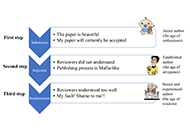
Open Access
Review
Oxidized low-density lipoproteins and their contribution to atherosclerosis
Abdullatif Taha Babakr
Published: January 17, 2025 Explor Cardiol. 2025;3:101246
This article belongs to the special issue Molecular Mechanisms of Cardiovascular Aging
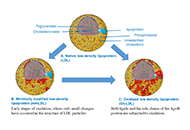
Open Access
Review
B-lines by lung ultrasound in cardiology
Marco Antonio Rodrigues Torres, Natália Moraes de Quevedo
Published: November 14, 2024 Explor Cardiol. 2024;2:265–279
This article belongs to the special issue Multimodality Imaging in Ischemic Heart Disease
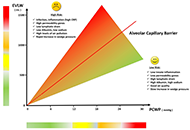
Open Access
Review
Mitral valve prolapse—arrhythmic faces of the valve disease
Maria Możdżan ... Karina Wierzbowska-Drabik
Published: October 31, 2023 Explor Cardiol. 2023;1:72–87
This article belongs to the special issue Common cardiovascular target for a wide gamut of contemporary health problems – thrombotic and arrhythmic sides of an inflammatory coin
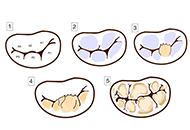
Open Access
Review
Diagnostic modalities for ischemic heart disease: evaluating the role of stress echocardiography, cardiac CT, and myocardial perfusion scintigraphy in guiding coronary angiography
Marco Fabio Costantino ... Luisiana Stolfi
Published: January 13, 2025 Explor Cardiol. 2025;3:101243
This article belongs to the special issue Multimodality Imaging in Ischemic Heart Disease
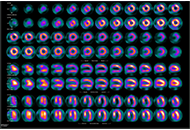
Open Access
Review
Echocardiographic Management of papillary muscle rupture during acute myocardial infarction
Paolo G. Pino ... Federico Nardi
Published: January 10, 2025 Explor Cardiol. 2025;3:101242
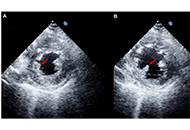
Open Access
Review
Comparison of short-term and long-term effects of peroral L-carnitine intake: clinical implications of elevated TMAO levels in cardiovascular complications
Harsahaj Singh Wilkhoo ... Adnan Akhtar Shaikh
Published: February 10, 2025 Explor Cardiol. 2025;3:101250

Open Access
Editorial
Who is a reviewer? The Good, the Bad, and the Ugly phenotypes
Eugenio Picano
Published: January 23, 2025 Explor Cardiol. 2025;3:101248
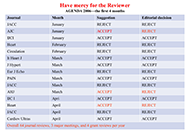
Open Access
Review
Oxidized low-density lipoproteins and their contribution to atherosclerosis
Abdullatif Taha Babakr
Published: January 17, 2025 Explor Cardiol. 2025;3:101246
This article belongs to the special issue Molecular Mechanisms of Cardiovascular Aging

Open Access
Review
Epigenetic mechanisms linking pregnancy complications to cardiovascular disease in offspring
Kazim Raza Talpur ... Muhammad Waleed Abdullah
Published: November 07, 2024 Explor Cardiol. 2024;2:241–252
This article belongs to the special issue Cardiovascular Risk for Mothers and Offspring Resulting from Complicated Pregnancy

Open Access
Editorial
Who is the author: genuine, honorary, ghost, gold, and fake authors?
Eugenio Picano
Published: May 13, 2024 Explor Cardiol. 2024;2:88–96

Open Access
Review
Noninvasive identification and therapeutic implications of supernormal left ventricular contractile phenotype
Yi Wang, Lixue Yin
Published: June 17, 2024 Explor Cardiol. 2024;2:97–113
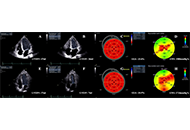
Open Access
Review
Laboratory markers of metabolic syndrome
Filipa Morgado ... Leonel Pereira
Published: June 24, 2024 Explor Cardiol. 2024;2:114–133
This article belongs to the special issue Molecular Mechanisms of Cardiovascular Aging
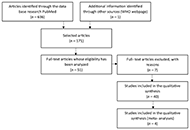
Open Access
Original Article
Normal physiologic coronary flow velocity gradient across the left anterior descending artery in healthy asymptomatic subjects
Fausto Rigo ... Maurizio Agnoletto
Published: August 31, 2023 Explor Cardiol. 2023;1:42–48
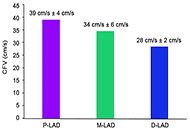
Open Access
Review
Toxic metals in pregnancy and congenital heart defects. Insights and new perspectives for a technology-driven reduction in food sources
Francesca Gorini, Alessandro Tonacci
Published: November 13, 2023 Explor Cardiol. 2023;1:114–140
This article belongs to the special issue Environmental Cardiology

Open Access
Original Article
Nanoparticles loaded with the DNA methyltransferase inhibitor SGI-1027 decrease murine atherosclerosis and inflammation in cultured human macrophages
Ana Cristina Márquez-Sánchez ... Silvio Zaina
Published: April 10, 2024 Explor Cardiol. 2024;2:49–66
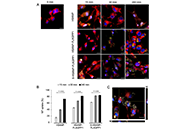
Special Issues
Ongoing Special lssues
Completed Special lssues
The Effect of Sexual Dysfunctions, Peripheral Artery Disease, and Patient Education on the Cardiovascular Risk in Diabetes
Guest Editors: Carmine Gazzaruso; Adriana Coppola
Submission Deadline: April 30, 2026
Published Articles: 1
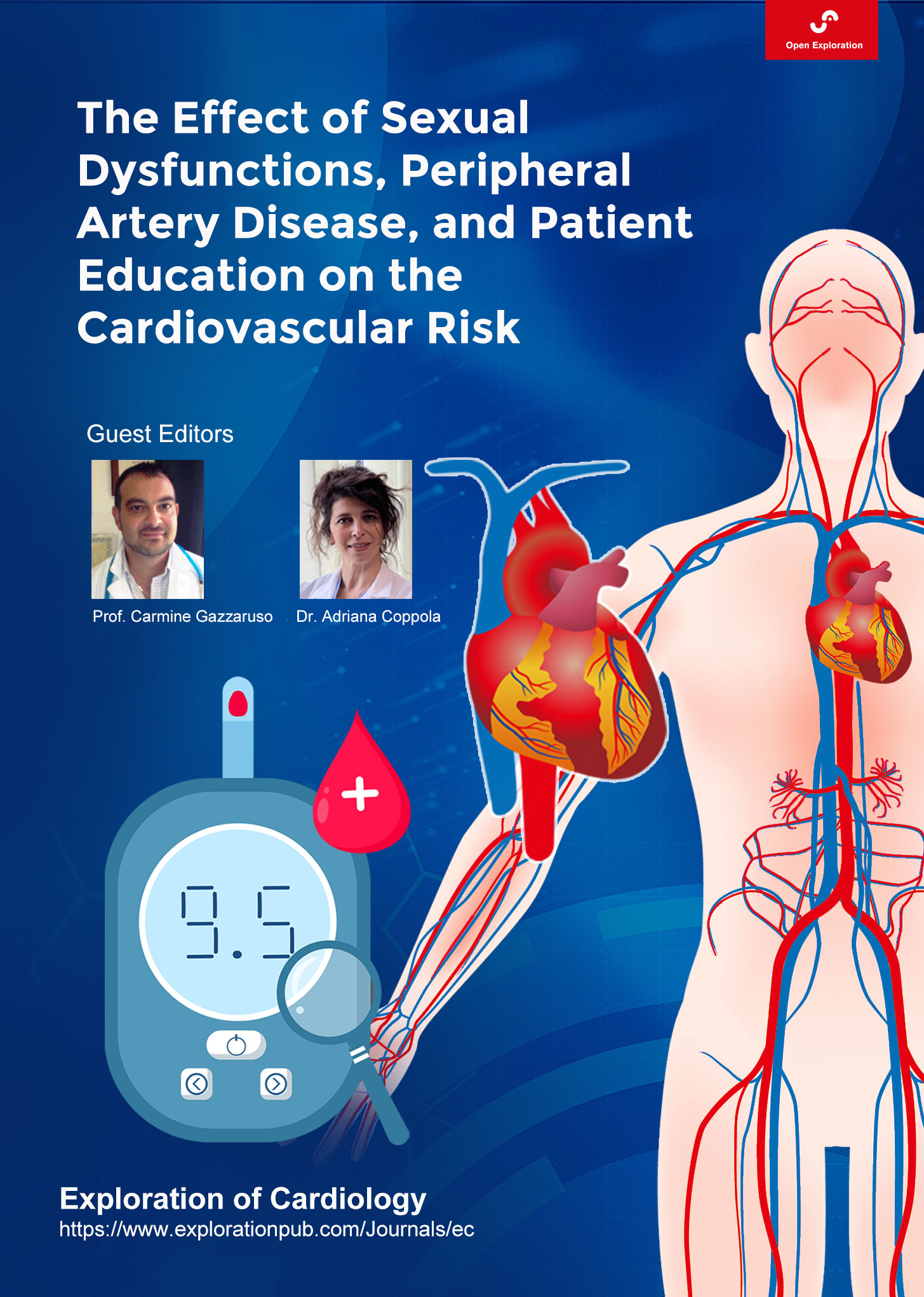
Exploring Exercise Cardiology: from Molecules to Humans
Guest Editor: Paulo Gentil
Submission Deadline: April 30, 2026
Published Articles: 1
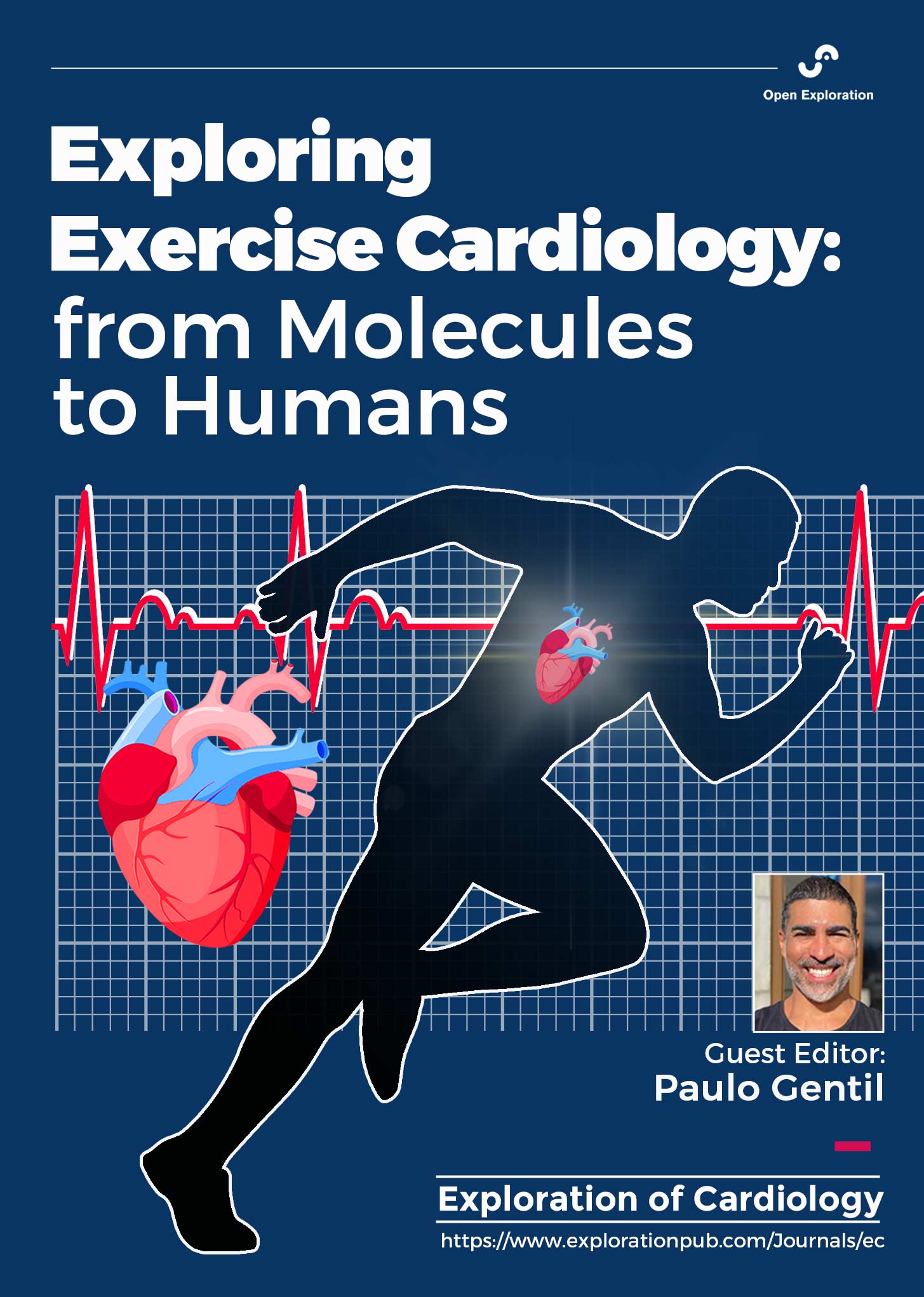
Cardiovascular Risk for Mothers and Offspring Resulting from Complicated Pregnancy
Guest Editor: Ilona Hromadnikova
Submission Deadline: April 30, 2026
Published Articles: 3
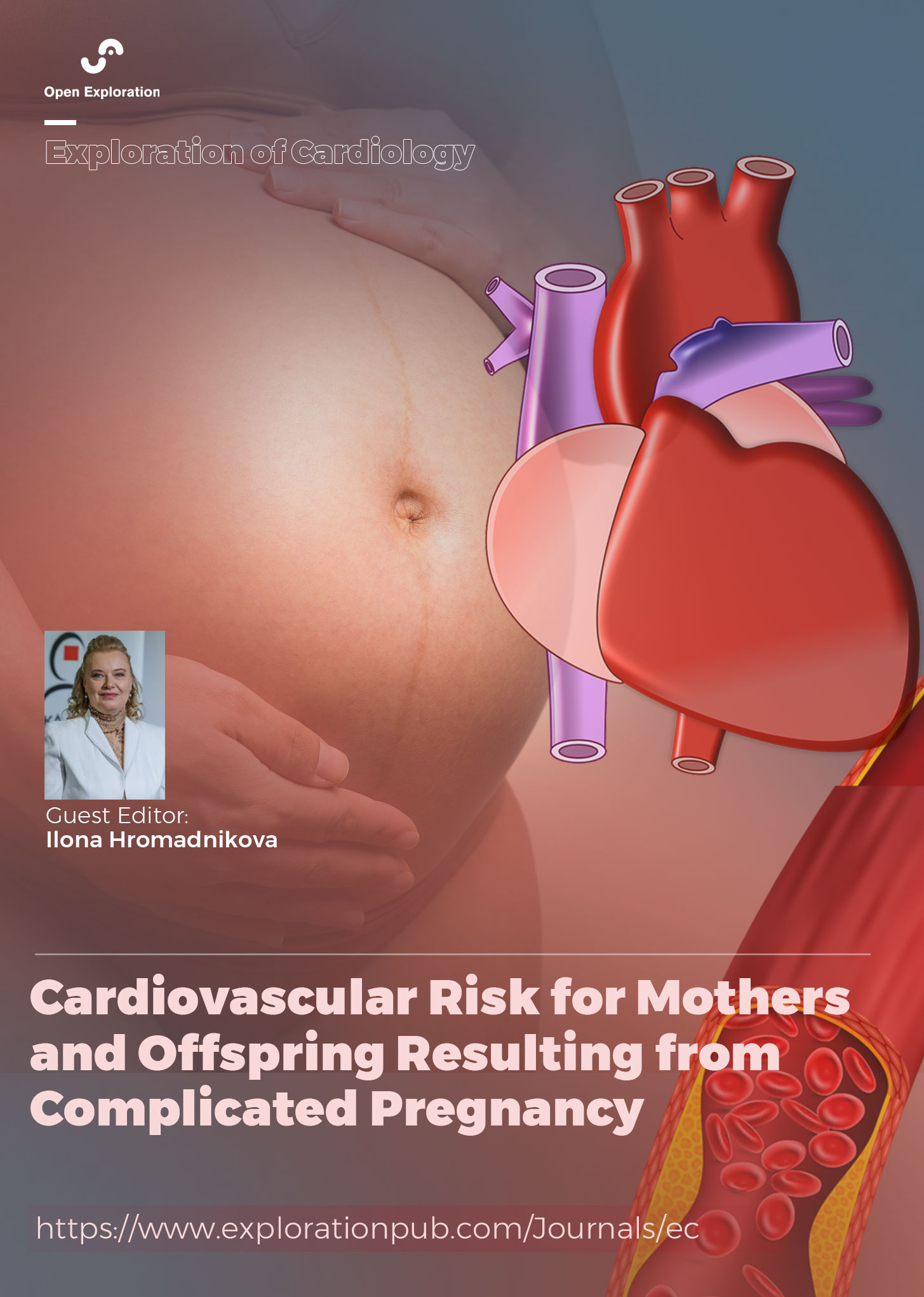
Multimodality Imaging in Ischemic Heart Disease
Guest Editors: Leonardo Bolognese; Maurizio Pieroni
Submission Deadline: April 30, 2026
Published Articles: 6
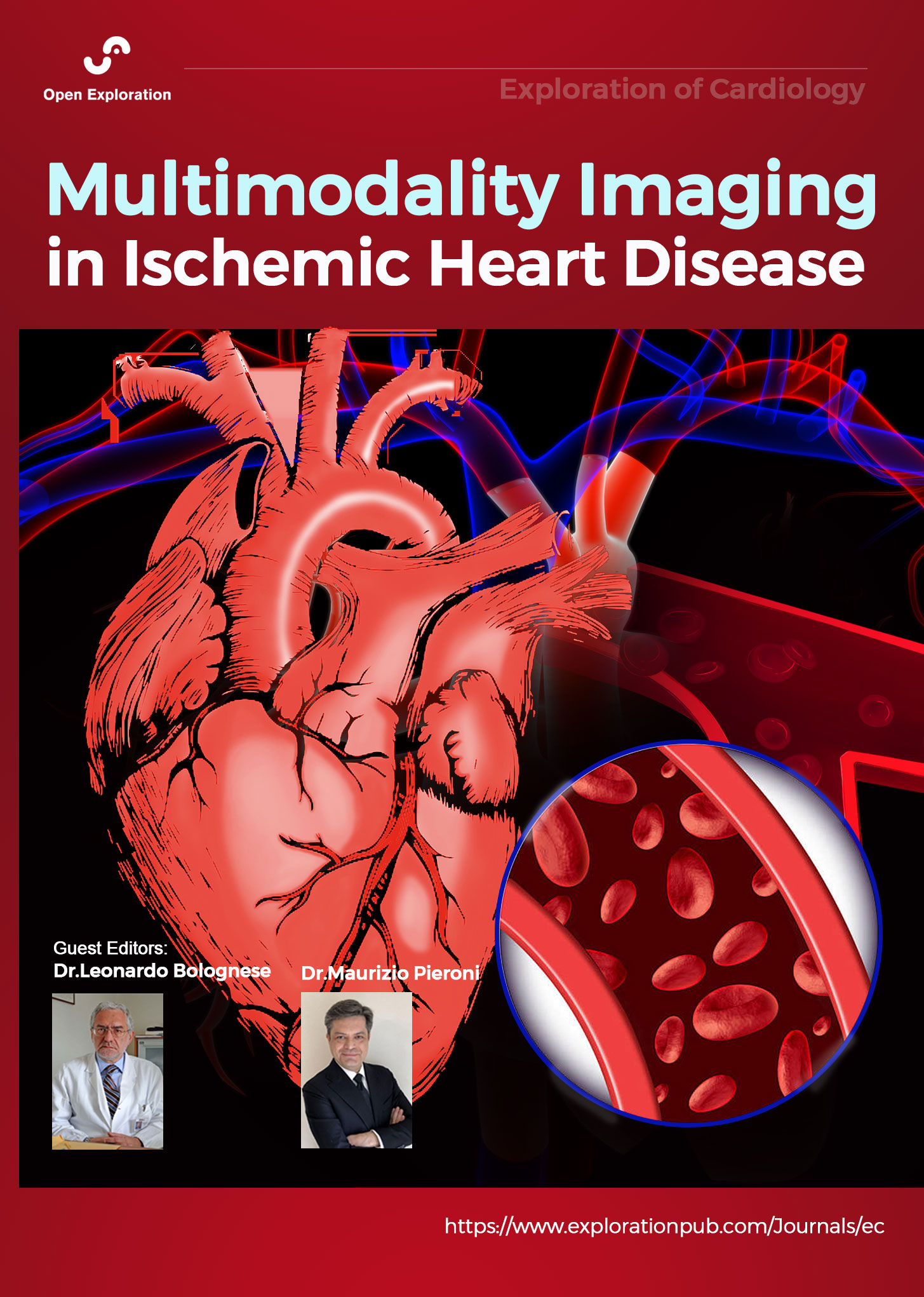
Environmental Cardiology
Guest Editor: Maria Grazia Andreassi
Submission Deadline: April 30, 2026
Published Articles: 5
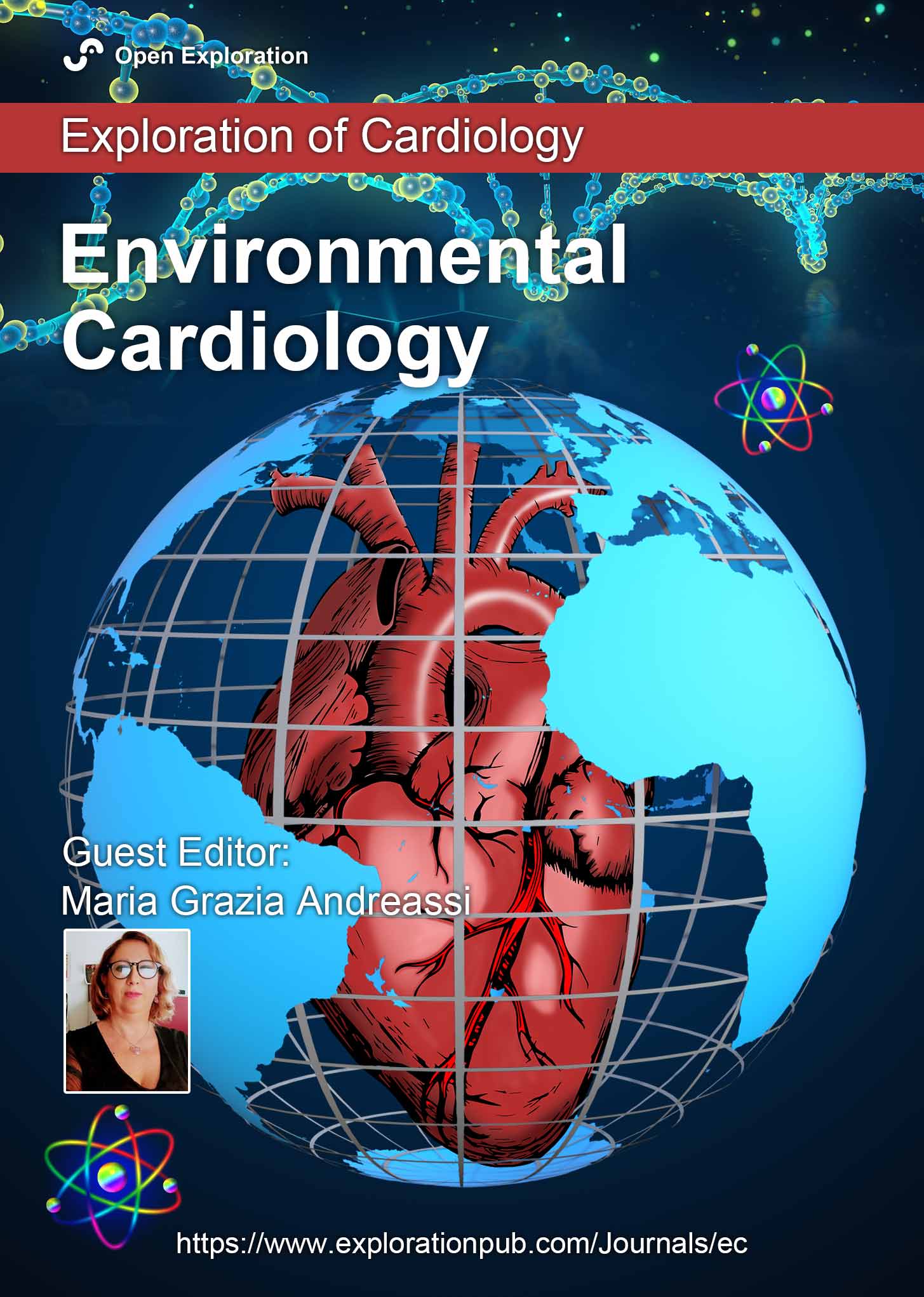
Molecular Mechanisms of Cardiovascular Aging
Guest Editor: Andrea Borghini
Submission Deadline: April 30, 2026
Published Articles: 5
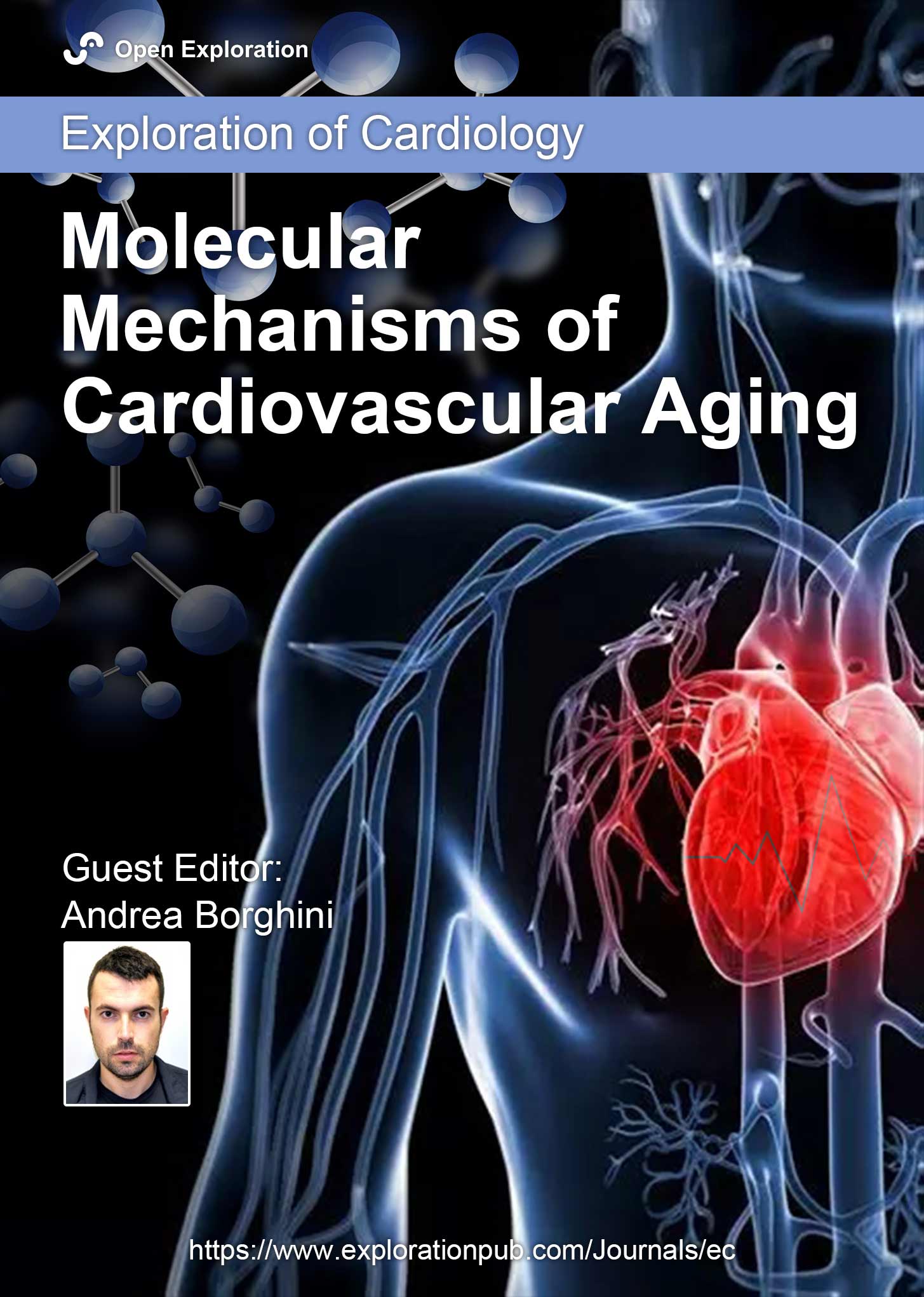
Journal Information
Journal Indexing
Journal Metrics






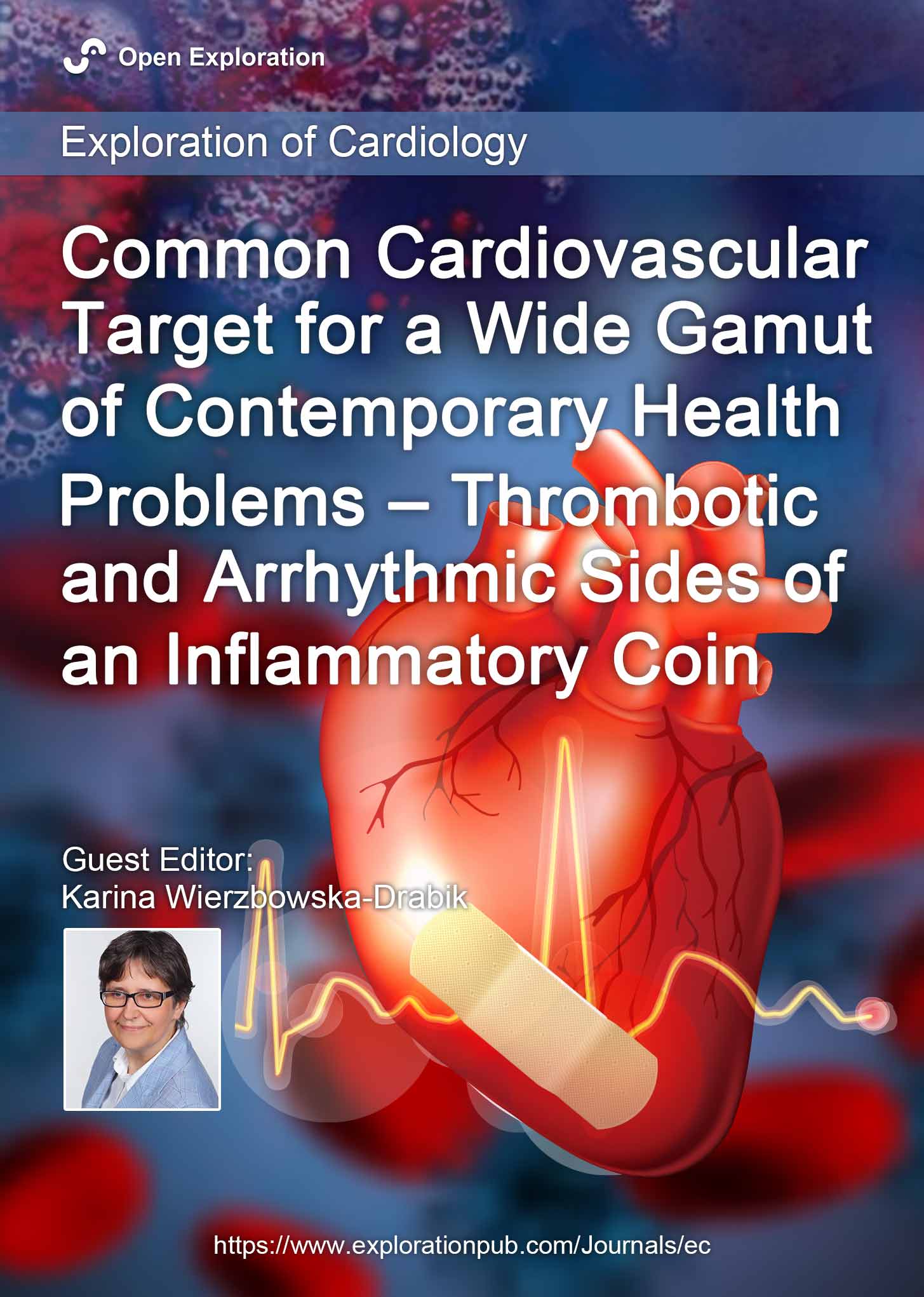







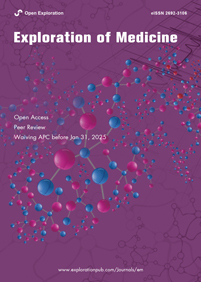
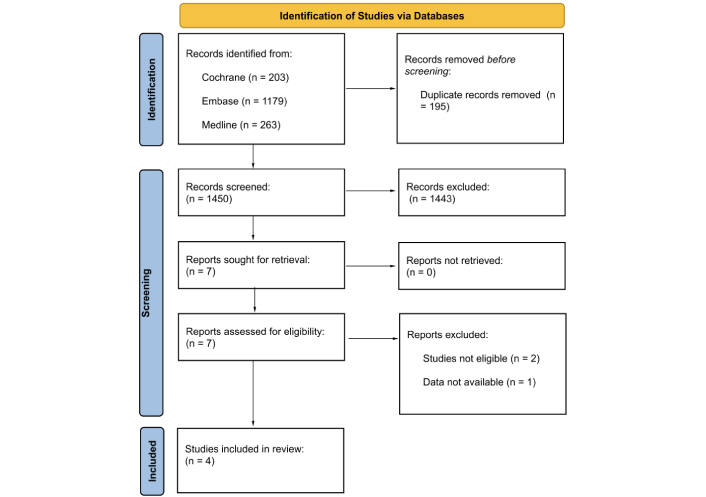 Title: Unravelling the interplaybetween #Harmattan wind andbaroreflex functions: implicationon environmental health andcardiovascular #pathophys
Title: Unravelling the interplaybetween #Harmattan wind andbaroreflex functions: implicationon environmental health andcardiovascular #pathophys


